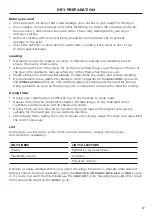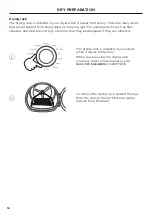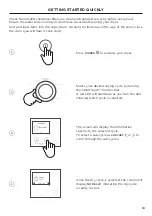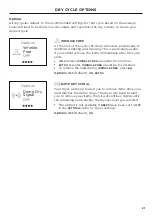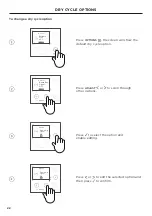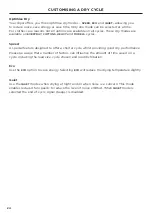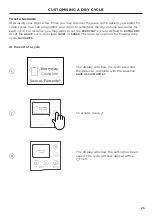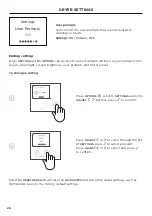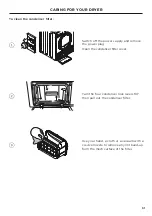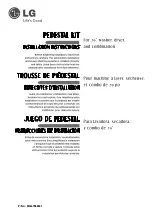
16
DRY PREPARATION
Sorting
Sort items into loads of similar items, and loads that will likely take similar times to dry. This
prevents the possibility of some items becoming over-dried whilst others are still damp.
Separate coloured items from white/light items where possible, especially when new. Colour
run may be an issue, especially if you intend to delay the start of the drying cycle.
Care labels on garments provide valuable information about the fabric type and
how the garment should be dried. Always follow the advice on garment labels.
ITEM/DRYING
REQUIREMENTS
SUGGESTED
CYCLE
COMMENTS
Towels
Towels
Towels produce a lot of lint and are best dried on
their own.
Sheets, pillowcases
Sheets
Ensure openings are buttoned/domed before
placing in the dryer.
Bulky items — doonas/
duvets, sleeping bags
and blankets
Bulky
Dry only one bulky item at a time.
Business shirts,
trousers, other
creasables
Easy Iron
WRINKLE FREE
is automatically selected to
help minimise creasing once the drying cycle
has finished.
Woollens
Wool
Designed for machine washable woollen items.
Delicates, fine fabrics
Delicate,
Ultra delicate
or Rack Dry
You can further reduce the dryness level to damp
or use Rack Dry for very delicate items.
Denim
Denim
Turn jeans inside out to help maintain their
appearance. Dry separately from other items.
Sports and
casual shoes
Sneakers
Check on the item regularly throughout
the drying cycle. Ensure the rack has been
correctly fitted.
Soft toys
Soft Toys
Check on the item/s regularly throughout the
drying cycle. Use the drying rack for more
delicate soft toys.
Hats and other odd
shaped items
Rack Dry
Check on the item regularly throughout
the drying cycle. Ensure the rack has been
correctly fitted.
Jackets
Outdoor
Turn jackets inside out to help maintain their
appearance. Dry separately from other items.
Bed linen, tea towels,
socks, reusable
face masks
Hygiene
Ensure the items can safely withstand heat.
















